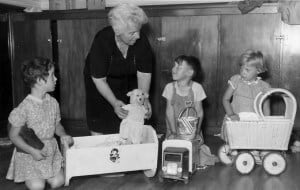A sold-out book that records the harrowing and sometimes heartening stories of people who grew up in children’s homes in Hawke’s Bay can now be read free of charge on EIT’s website.
Who Cared? Childhoods within Hawke’s Bay Children’s Homes and Orphanages 1892-1988 was researched and written by EIT research professor Kay Morris Matthews.
The launch of the first book in late 2012 triggered an upsurge of new information which Dr Morris Matthews included in a second edition last year. Both editions have since sold out and the internationally-recognised academic historian says she is still being invited to give talks about the children’s homes.
“Folk are still interested in this snapshot of the experiences of thousands of youngsters – orphaned, illegitimate, abandoned or destitute – who lived part or all of their childhoods in eight institutions that operated in the region.”
Many people are surprised to learn that the last such home in Hawke’s Bay closed as recently as 26 years ago.
The idea of the book began taking shape after Dr Morris Matthews accessed publicly available information on Hawke’s Bay children’s homes. Recognising the need to document this important chapter in New Zealand history, she then delved into institutional and government records and, with the help of family and friends, sought out people who had experienced institutional childhoods at first-hand.
All those approached agreed to being interviewed and, given the opportunity to read what had been written, to having their stories published under their names and identifying the institution in which they had lived.
Dr Morris Matthews recalls many raw emotional moments as they spoke of their experiences. Some were aggrieved, describing institutions where the culture was tough and there was little ‘caring’ and predictable daily routines included large doses of religion.
Most children were only three or four years old when admitted, and they suffered long-term effects of emotional abuse that included adult sarcasm and being ‘put in the hole’, a dark cupboard under the stairs, for hours at a time.
A more positive theme was of youngsters who developed self-reliance and resilience at an early age.
“For some, the children they grew up with remained ‘like family’ all their lives,” Dr Morris Matthews says, “and their networks and friendships remain strong.”
The second edition of the book can be read here

